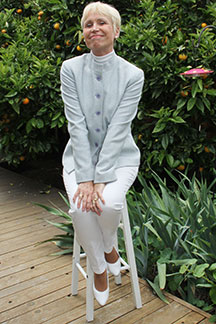The German Chancellery in Berlin, known as the Bundeskanzleramt, is one of the largest government headquarters in the world. Occupying 129,166 square feet, it is more than twice the size of the White House in Washington. https://archive.curbed.com/2015/12/9/9892938/angela-merkel-time-person-of-the-year-german-chancellery While the Chancellery’s architecture is modern, Germany’s Parliament, the Reichstag, just across the adjacent open plaza, has an “old-world” look. The Bundeskanzleramt’s simple and open design is to symbolize transparency in government.
Location and architecture of the Chancellery
The German Chancellery is located in a bend in the River Spree and consists of three connected structures. At the heart of the grouping stands a nine-story white cube. Its entrance is framed by a series of freestanding columns. Large glass facades give it an airy look. This is where official receptions and presentations are hosted. The two connecting wings house the administrative staff.

German Chancellery in the bend of the River Spree. Photo © J. Elke Ertle, 2016, www.walled-in-berlin.com
History of the German Chancellery
The German Chancellery was established in 1871 as Reichskanzlei (Imperial Chancellery) of the German Empire. The Reichskanzlei was located in the Wilhelmstrasse, just a little over a mile southeast from the current location. In 1939, construction was completed on the Neue Reichskanzlei (New Imperial Chancellery) in the Vossstrasse, also close to the current location. The New Imperial Chancellery was damaged during World War II and subsequently razed by Soviet occupation forces.
After World War II and the division of Berlin and Germany, Bonn became the seat of the West German government. In 1949, the West German Chancellery moved to Bonn. At the same time, East Germany created the Volkskammer (People’s Chamber), the East German Parliament. The Volkskammer eventually moved into the Palace of the Republic in East Berlin. http://www.walled-in-berlin.com/j-elke-ertle/the-palast-der-republik-lives-on/
In the summer of 1999, the government of the reunited Germany returned to Berlin. Until the new German Chancellery building was completed, the Chancellor’s offices were temporarily housed in the former State Council building (Staatsratsgebaeude). In spring of 2001, the current Bundeskanzleramt opened for business.
The Chancellor’s apartment
While located in Bonn, a separate bungalow had served as the private residence for the Chancellor and family. Although an apartment for the Chancellor is located on the top floor of the central Chancellery cube, current Chancellor Angela Merkel prefers to live in her private apartment. She and her husband, Professor Joachim Sauer, reside at “Am Kupfergraben 6,” across from Museum Island in the Mitte District of Berlin. Contrary to the extensive security that surrounds top State officials in the United States, Merkel’s apartment building is watched over by just two policemen. There are no blocked streets, no police vans and no armed guards.
For a sneak peek at the first 20+ pages of my memoir, Walled-In: A West Berlin Girl’s Journey to Freedom, click “Download a free excerpt” on my home page and feel free to follow my blog about anything German: historic or current events, people, places or food.
Walled-In is my story of growing up in Berlin during the Cold War. Juxtaposing the events that engulfed Berlin during the Berlin Blockade, the Berlin Airlift, the Berlin Wall and Kennedy’s Berlin visit with the struggle against my equally insurmountable parental walls, Walled-In is about freedom vs. conformity, conflict vs. harmony, domination vs. submission, loyalty vs. betrayal.





















